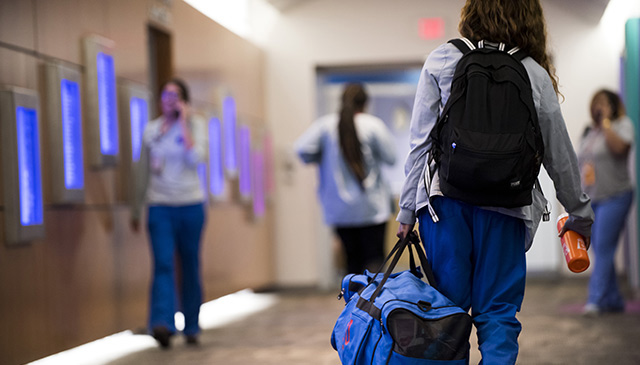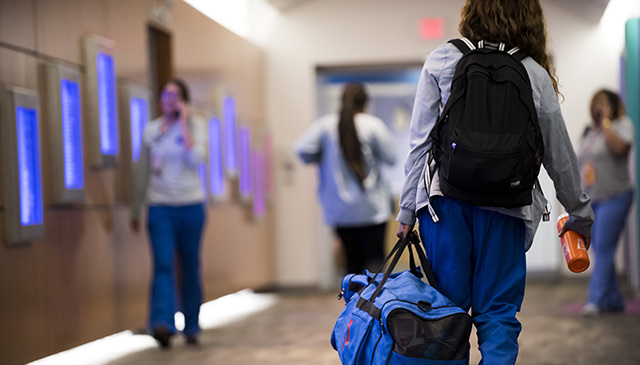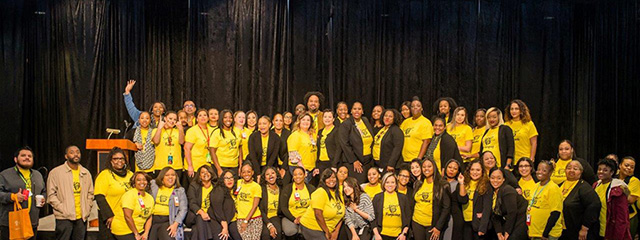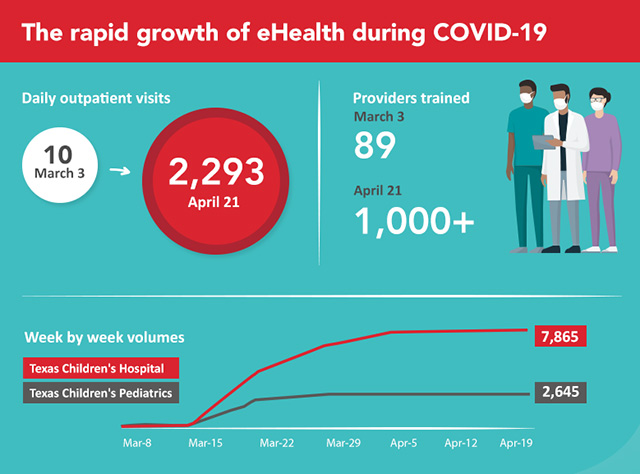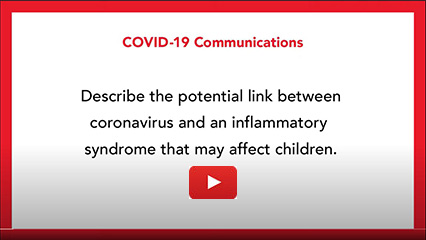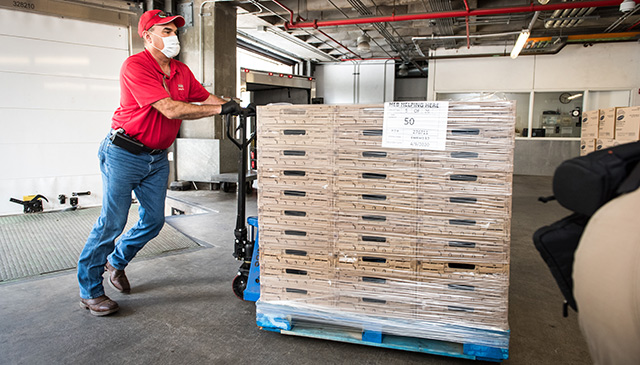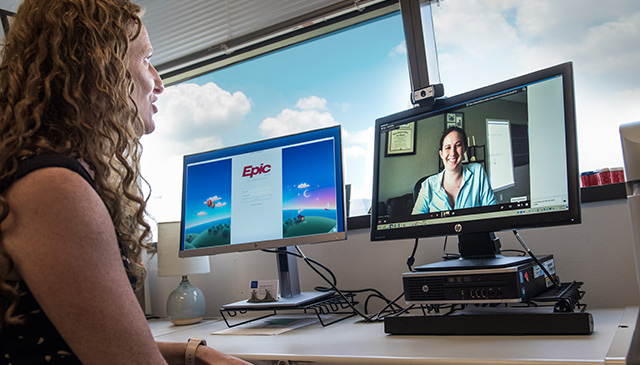
The world looks very different than it did just months ago. The outbreak of the COVID-19 pandemic has added a layer of uncertainty and stress to Texas Children’s providers, patients and the community. In response to this crisis, the Texas Children’s Psychology Service has expanded access to its programs and services to ensure our patients and providers receive the mental health support that they need.
On March 23, Psychology launched video visits and completed over 120 e-Health visits in the first week alone. One week later the volumes had doubled and have been climbing ever since. By the end of April the service was 17 percent above budgeted appointments for the month. Since launching e-Health visits in March, Psychology received 127 COVID-specific referrals and completed over 2,942 video visits which included both COVID and non-COVID related appointments thanks to the service’s e-Health capabilities.
“We owe the successful transition to e-Health in Psychology to our clinic staff and providers,” said Manny Hill, practice administrator for Psychology. “Their adaptability and steadfast commitment to our patients allowed us to completely change our care model in such a short amount of time.”
Supporting our patients
Beginning in March, Psychology added COVID-Related Psychological Distress e-Health appointments for patients seen at any location throughout the Texas Children’s system. This includes children and adolescents experiencing difficulties with anxiety, stress, or mood, as well as preschoolers with behavioral difficulties.
“We know that uncertainty, disrupted routines, social isolation, and parental stress impact children of all ages,” said Dr. Karin Price, chief of Psychology at Texas Children’s. “Our goal is to ensure that any child experiencing distress related to COVID-19 has access to a mental health professional who can support coping and resilience during this unprecedented time.”
Any providers who encounter pediatric patients with these concerns should place an Epic order for Referral to Psychology. Any patients referred for “COVID Related Distress” will be contacted for scheduling within 48 hours of referral.
Supporting our patient care providers
The Psychology Section has also partnered with the Practitioner Health and Well-Being Committee to launch the PARALLEL Program for Peer Support. This program is focused on providing emotional respite and support for frontline health care workers at Texas Children’s. The PARALLEL Program offers an opportunity to be coached in managing work-related stress brought on by the COVID-19 crisis. Dr. Gia Washington leads the program as Texas Children’s chief well-being officer.
“It has been a blessing to participate and support co-workers through the PARALLEL program,” said Carolina Coronel, a provider supporting the PARALLEL program. “A few minutes listening to someone can make a big difference in their lives; we all cope differently, but we all are meant to be social beings. This program has brought what many of us have been seeking: being heard.”
If you are a Texas Children’s Hospital Medical Staff provider and would like to access this support, please contact the Well-Being phone line at 832-822-9355 between the hours of 8 a.m. and 5 p.m., Monday thru Friday and request to speak with a PARALLEL Provider. You can contact the Well-Being phone line for support as often as you need to during management of the COVID-19 crisis.
“While the COVID-19 health pandemic can be overwhelming at times, our response to the stress will make us stronger as One Amazing Team,” added Price.


